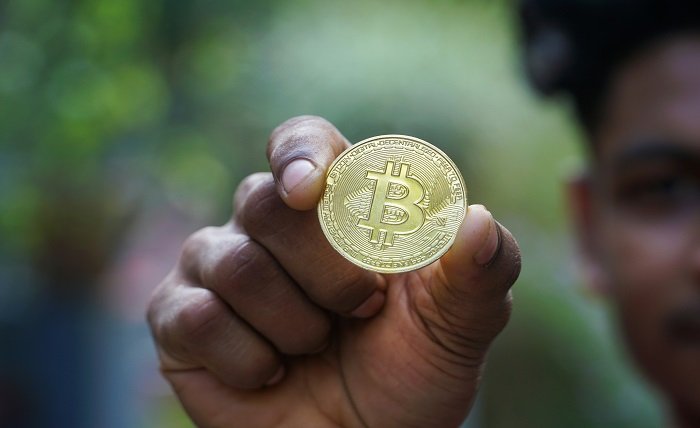Bitcoin’s popularity is increasing in India. Growing interest in cryptocurrencies across the nation has made the performance of Bitcoin against the Indian Rupee (INR) a topic of increasing relevance for traders, investors, and fans alike.
Reflecting worldwide market attitudes, domestic regulatory rules, and more general economic situations, the Bitcoin price today has displayed notable swings, as shown by the most recent numbers from top sources.
Anyone interested in these trends needs to closely monitor Bitcoin’s price to evaluate its position when compared to the Indian rupee. Several events over the past few months have shaped the value of Bitcoin: inflation worries, interest rate decisions, and India’s changing attitude on crypto laws. We’ll examine these factors in this article.
A Brief Snapshot of Bitcoin vs. INR
The performance of Bitcoin against the Indian rupee relates to both local and worldwide financial changes. Based on the most recent figures from reliable sources like Financial Times, Binance, and Forbes, Bitcoin trades in India totalled around ₹4,600,000—a clear rise when compared to previous activity. Still highly vulnerable to world events, this movement reflects Bitcoin’s erratic character.
The fast-changing digital landscape of India is attracting both institutional players and individual investors who are highly engaged with Bitcoin. Despite continuous regulatory uncertainty, platforms like Binance have seen explosive volumes in INR-based Bitcoin trading pairs, suggesting great local demand.
The Role of Inflation and Economic Conditions
Persistent inflation pressures in India have caused many investors to search for different assets. Often called digital gold, Bitcoin has presented itself as a hedge against conventional inflationary pressures. Although the price of Bitcoin in INR terms might vary greatly, its main appeal as a distributed asset free from direct connection to central bank policies appeals to investors trying to diversify their assets.
Bitcoin’s value in INR terms is influenced by economic factors, including India’s monetary policy, rupee performance against other world currencies, and more general financial market conditions. For example, during times of rupee devaluation, the price of Bitcoin in INR could rise even if its USD value stays constant.
Indian Regulatory Landscape
The performance of Bitcoin still heavily relies on the legal environment of India. The Reserve Bank of India (RBI) and the Ministry of Finance have swung between cautious optimism and pure cynicism on Bitcoin. Initially reducing trade volumes, India adopted a 30% tax on crypto earnings and a 1% Tax Deducted at Source (TDS) on transactions in 2022 and 2023.
But by 2025, there is an increasing belief that India will be exploring more transparent policies to control digital assets. Depending on potential new rules and how they might affect domestic exchanges, this changing regulatory scene could either encourage or discourage Bitcoin’s adoption.
How Worldwide Events Impact Bitcoin in India
The way Bitcoin performs in INR terms is not an isolated thing. Direct influences on Bitcoin’s price can include global events like geopolitics, interest rate policies of the Federal Reserve, and general attitudes toward cryptocurrencies. For instance, an increasing demand for Bitcoin in India can result from a surge in worldwide Bitcoin demand brought on by concerns about traditional market corrections.
Because of this interdependence, Indian investors have to stay aware of global news that can affect the performance of Bitcoin, in addition to monitoring local events.
Retail Interest and Institutional Adoption
India’s institutional curiosity about Bitcoin is still a mixed bag. Although some conventional financial companies have started looking at blockchain solutions, regulatory caution has kept major institutional adoption quite subdued. Retail interest, meantime, is still rising steadily.
Platforms like Binance mirror this expansion since INR trading volumes have shown clear upticks. Driven partly by simple access via digital exchanges and a rising acceptance of digital assets as part of diversified portfolios, retail investors are progressively turning to Bitcoin as a long-term store of value.
Market and Technical Aspects
Beyond macroeconomic and legal factors, technology advancements help to define Bitcoin’s success against the INR. Faster transaction processing and the spread of decentralized finance (DeFi) platforms, among other improvements in blockchain infrastructure, help to strengthen Bitcoin’s position.
Furthermore, opinions on Bitcoin halving events, which slow down the rate of new coin production, may inspire conjecture and possible price swings. History tells us that, over time, these cyclical halving events can support positive Bitcoin price momentum.
Outlook for Bitcoin in India
Bitcoin’s future in India seems destined for ongoing expansion. Whether India’s huge population accepts this digital asset or remains cautious about its volatility and use potential will depend largely on regulatory clarity.
Tracking the Bitcoin price is only one of many aspects Indian investors need to worry about. It is also important for investors to take into account India’s GDP growth, inflation projection, and changing financial environment that might either help or hinder Bitcoin’s more general acceptance and viability in the nation.
Bitcoin is still a valuable asset of worldwide interest despite market swings; India’s involvement in this changing story is therefore rather important. Bitcoin’s relationship with the Indian Rupee will be a crucial indicator of the wider crypto acceptance narrative in one of the world’s biggest economies, as digital assets become more popular and technology keeps changing financial systems.
